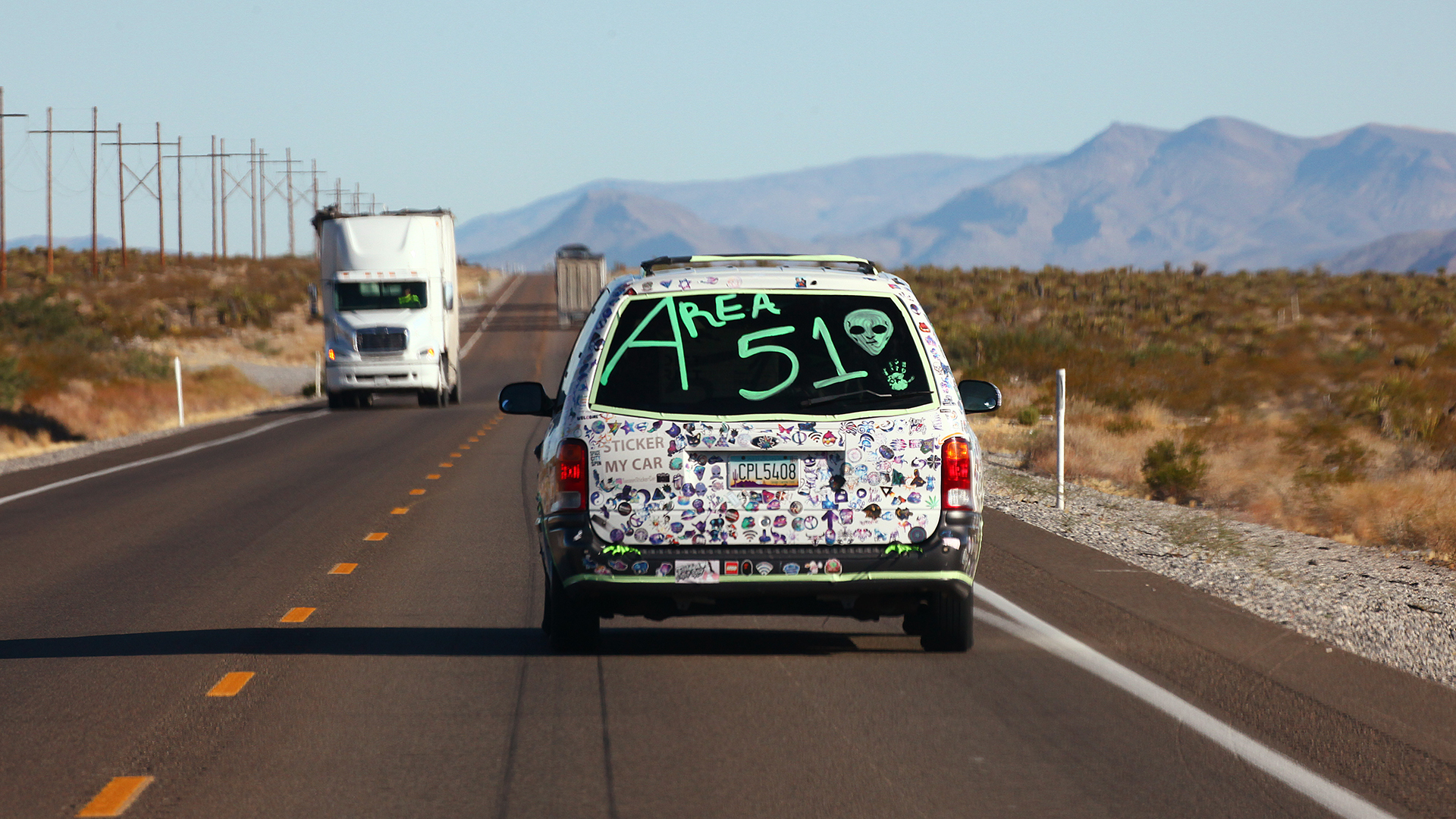Siege of top-secret Area 51 began as a joke. Officials prepared to use deadly force in response.
Law enforcement agencies took the 2019 event very, very seriously.

When a UFO enthusiast posted an event on Facebook about "storming" the military base known as Area 51, he meant it as a joke. However, it was no laughing matter to federal and state law enforcement, who readied a lethal response to prevent revelers from breaching the off-limits area, records recently revealed.
Area 51 is a U.S. Air Force installation in southern Nevada's Groom Lake, a salt flat about 80 miles (129 kilometers) northwest of Las Vegas. For decades, the base's remote location and restricted access have fueled speculation about military officials performing secret experiments on extraterrestrials there, and storing evidence of alien visitors and UFOs.
The general public is barred from visiting Area 51. But during the summer of 2019, a Facebook event titled "Storm Area 51, They Can't Stop All of Us" (now deleted) enticed nearly 2 million people to sign up for a raid on the base to take place on Sept. 20. The massive scale of the proposed event raised alarms at local and federal levels, according to government communications that were recently obtained by Rolling Stone. Dozens of law enforcement agencies mobilized and readied responses to the proposed onslaught, including "automated deadly force countermeasures," Rolling Stone reported Oct. 17.
Related: 15 far-out facts about Area 51
The plan for "Storm Area 51", according to the Facebook post, was for attendees to gather in the Nevada desert near Area 51, charge the gates at sunrise and then, once inside, "see them aliens" and possibly conduct an extraterrestrial rescue operation, Live Science previously reported. Matty Roberts, then a 20-year-old college student in Bakersfield, California, created the post on June 27, and claimed "it was totally a joke from the get-go," Roberts told the BBC on Sept. 13, 2019.
But law enforcement agencies weren't amused; and they prepared accordingly.
"A certain portion of the participants may be armed and could expect armed conflict," read the Nevada Department of Public Safety Investigation Division's operational plan for the "Storm Area 51" event. The 2019 document was obtained by the nonpartisan government transparency group Property of the People and then shared with Rolling Stone. Hundreds of pages detailed law enforcement agencies' plans, situation reports, descriptions of transport for Area 51 employees, and maps of all entrances, Rolling Stone reported.
Sign up for the Live Science daily newsletter now
Get the world’s most fascinating discoveries delivered straight to your inbox.
The document also described several unnamed YouTubers' attempts to track employees as they entered and left the base, according to Rolling Stone.
Even if most of the "Storm Area 51" attendees weren't seriously planning to invade a restricted military site, "there is a potential for domestic and foreign terrorist groups to utilize this event to test the security of sensitive national security sites by infiltrating the groups planning to storm the facility," the plan read. Harsh conditions in the Nevada desert — the threat of wildfires, lack of water and extreme temperature fluctuations — could worsen an already volatile situation, sowing panic and increasing the possibility of "mass casualties," according to the report.
In the end, online interest in raiding the base petered out, and Roberts canceled "Storm Area 51" with just nine days to spare. As an alternative, he urged people to instead visit "Alienstock," a UFO-celebrating festival in Las Vegas; nonetheless, a few thousand people still gathered in the town of Rachel, Nevada, about a 20-minute drive from Area 51's entrance, on the appointed day, The Guardian reported on Sept. 24, 2019.
However, most of the assembled throng were busy documenting their presence for viewers on YouTube and Instagram, and none broke down the gates to find hidden evidence of UFOs, according to the Guardian.
Originally published on Live Science.

Mindy Weisberger is an editor at Scholastic and a former Live Science channel editor and senior writer. She has reported on general science, covering climate change, paleontology, biology and space. Mindy studied film at Columbia University; prior to Live Science she produced, wrote and directed media for the American Museum of Natural History in New York City. Her videos about dinosaurs, astrophysics, biodiversity and evolution appear in museums and science centers worldwide, earning awards such as the CINE Golden Eagle and the Communicator Award of Excellence. Her writing has also appeared in Scientific American, The Washington Post and How It Works Magazine. Her book "Rise of the Zombie Bugs: The Surprising Science of Parasitic Mind Control" will be published in spring 2025 by Johns Hopkins University Press.










